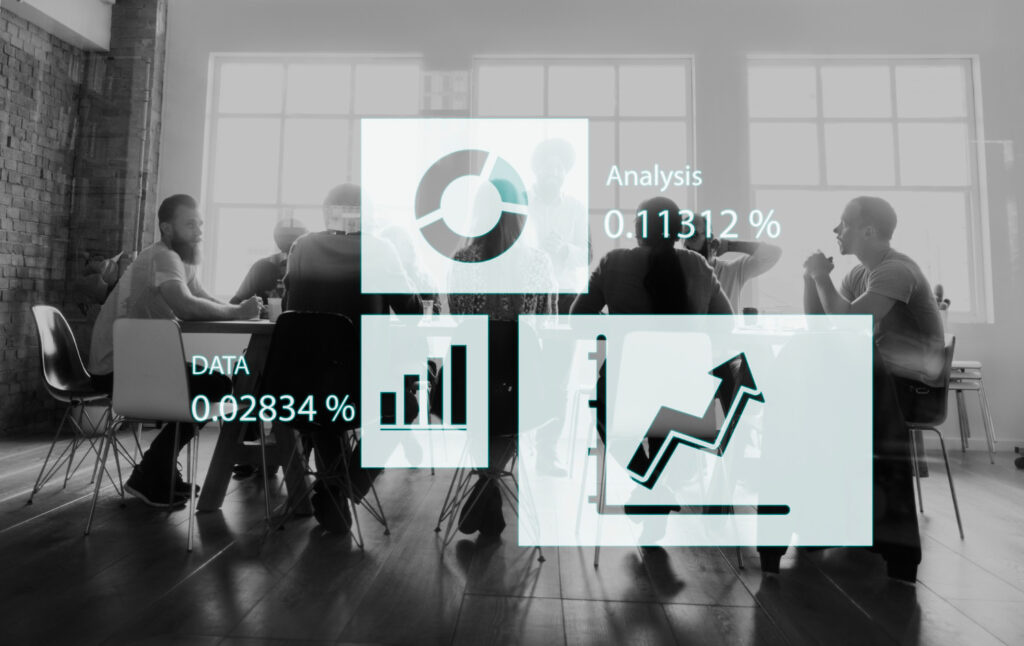In today’s digital landscape, data-driven decision-making is critical for optimizing marketing efforts and improving outcomes. Digital marketing analytics is critical for helping organizations track their performance, evaluate customer behavior, and adapt campaign plans. Businesses that properly use analytics can improve their marketing tactics, maximize consumer experiences, and ultimately increase ROI. Here’s an in-depth guide to using digital marketing statistics to maximize campaign success.
- Understanding the Key Metrics.
To get the most out of digital marketing analytics, you must understand which indicators are critical to your business objectives. These can differ depending on your goals, however some of the most important measures include:
Traffic Metrics: Monitor website traffic sources such as organic search, paid ads, social media, and direct visits. This helps detect which channels are attracting the most visits and which require improvement.
Conversion Rate: This metric determines how many visitors complete a desired activity on your website (for example, placing a purchase or filling out a contact form). Monitoring conversion rates across marketing efforts allows you to measure their effectiveness.
Customer Acquisition Cost (CAC): This indicator indicates how much it costs to acquire a customer through various channels, such as paid advertising or social media. You may assess the profitability of your marketing activities by comparing it to your customer lifetime value (CLV).
Bounce Rate: The bounce rate is the percentage of visitors who abandon your website after seeing just one page. A high bounce rate may indicate problems with the user experience or content relevancy.
Engagement metrics include the number of likes, shares, comments, and click-through rates (CTR) on social media postings, emails, and advertisements. High engagement is frequently associated with higher conversion rates.
- Establish clear goals and KPIs.
Before getting into analytics, it’s critical to define clear marketing objectives and Key Performance Indicators (KPI). These goals should be consistent with your overall business objectives, such as growing sales, brand exposure, or website traffic.
For example:
Brand Awareness Goals: Impressions, social media reach, and website visits are all useful metrics.
Lead Generation Objectives: Monitor form submissions, email sign-ups, and whitepaper downloads.
Sales Objectives: Concentrate on conversion rates, revenue, and ROI.
KPIs should be SMART (specific, measurable, achievable, relevant, and time-bound). They will serve as benchmarks for assessing your progress and highlighting areas for improvement.
- Monitor and analyze customer behavior.
Understanding your audience’s behavior is essential for developing your marketing plan. Using technologies such as Google Analytics, you may gain vital information into how users engage with your website, adverts and content. Focus on metrics like:
User Flow: Learn how users navigate your website, where they leave, and where they convert. This can assist uncover friction spots that may be preventing conversions.
Heatmaps: Use tools like Hotjar or Crazy Egg to see how users interact with your website. Heatmaps highlight where people are clicking, scrolling, and spending the most time, allowing you to optimize your layout or content placement for increased interaction.
Segmentation: Divide data into distinct categories based on demographics, device kind, location, or purchase behavior. This enables you to personalize your marketing efforts for each audience category and optimize for improved conversions.
- A/B Testing for Continuous Improvement.
A/B testing, also known as split testing, compares two versions of a webpage, ad, email, or landing page to determine which works better. This strategy is essential for honing your campaigns and improving the customer experience.
For instance, you may try:
Alternative ad copy or visuals
CTA (Call to Action) buttons (for example, “Buy Now” versus “Shop Now”)
Email subject lines and content formats.
Running A/B tests allows you to make data-driven decisions about which components of your campaigns are most effective with your target audience, resulting in improved engagement and conversion rates.
- Optimize marketing channels. Based on data.
Data analytics delivers the knowledge required to enhance your marketing channels and distribute your cash effectively. For example, you can monitor performance across multiple channels, such as:
SEM (Search Engine Marketing): Monitor the efficacy of sponsored search ads, keyword rankings, and organic search traffic. If specific keywords generate high-quality traffic, try investing more in those areas.
Social Media Marketing: Monitor engagement and conversion rates across several social media platforms. Analytics tools on platforms such as Facebook Insights, Instagram Analytics, and Twitter Analytics can provide precise information about audience demographics and content performance.
Email Marketing: Track open rates, click-through rates (CTR), and conversion rates to determine which email campaigns are the most effective. Use this data to adjust topic lines and content.
Analyze the performance of display ads and retargeting programs. Track metrics such as impressions, CTR, and conversions to determine whether your ads are reaching the right people at the appropriate time.
- Predict and Adjust Strategy Using Predictive Analytics
Predictive analytics predicts future events based on historical data. Businesses may forecast customer behavior, sales, and even market shifts by evaluating historical data. This facilitates proactive decision-making and marketing adjustments before they underperform.
For example, if your predictive analytics suggest that certain client categories are more likely to convert during specific seasons or times of day, you may tailor your ads accordingly. Similarly, predictive technologies can help you discover which products or services are likely to be in demand, allowing you to tailor your marketing strategy accordingly.
- Reporting and visualizing data
Finally, convey your results in a clear and actionable manner. Create dashboards using reporting tools and data visualization platforms like as Google Data Studio, Tableau, and Microsoft Power BI so that stakeholders can quickly understand campaign results. Data visualisations make it easier to discover patterns, opportunities, and deliver findings to important decision-makers.
- Refine strategies and make data-driven decisions.
After you’ve reviewed the data, it’s time to improve your digital marketing techniques. Data-driven decisions enable firms to respond to shifting client preferences, market situations, and competitive landscapes. Apply insights to:
Adjust your content strategies to focus on the types of content that increase engagement and conversions.
Reallocate budgets: Invest more in high-performing channels while cutting spending on underperforming ones.
Personalize your campaigns: Customize messaging, offers, and adverts for specific audience segments to increase relevance and effectiveness.
Test and Iterate: To keep ahead of the competition, test, optimize, and experiment with new strategies on a continuous basis.
Conclusion
Digital marketing analytics is critical for refining plans, optimizing campaigns, and increasing ROI. Businesses can improve their performance by tracking key indicators, studying customer behavior, and utilizing tools such as A/B testing and predictive analytics. The ongoing process of monitoring and adjusting marketing efforts guarantees that organizations can react to trends, fulfill client expectations, and achieve long-term success.

